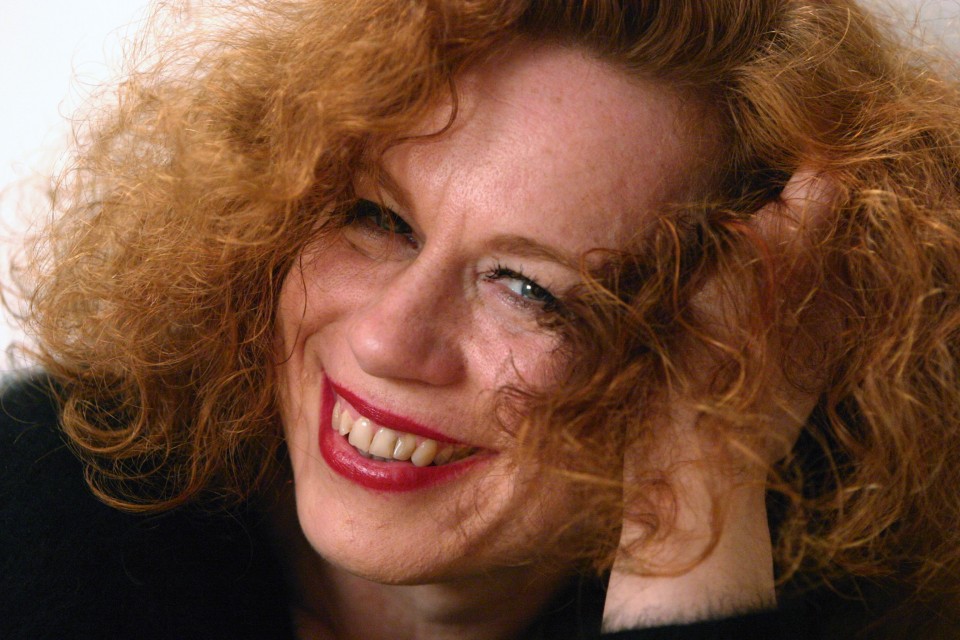Maybe all interviewees should do this. When Sarah Jane Morris calls me at home, she’s bright and full of life, having just come back from a massage. Not only that, she’s just returned from a successful tour in Italy, where she maintains a large fanbase.
We’re talking about her forthcoming album The Sisterhood, written with her ‘right-hand man’ Tony Rémy about the lives of 10 female singer-songwriters who have inspired her. It’s an impressive list, in chronological order: Bessie Smith, Billie Holiday, Miriam Makeba, Nina Simone, Aretha Franklin, Janis Joplin, Joni Mitchell, Ricky-Lee Jones, Annie Lennox, and Kate Bush. It’s a project that came out of lockdown boredom, but that clearly took on an amazing life of its own.
I asked her what prompted the album.
‘The summer before lockdown,’ she explains, ‘I moved to St. Leonard’s-On Sea. I needed a knee replacement –that didn’t happen,’ she adds wryly. When the second lockdown happened, she knew she needed a project, and this is how The Sisterhood started. Reflecting that it’s ‘always the men who are in the history books, I chose a list of about fifty and got it down to ten. I already loved the music, but by reading the biographies I fell in love with the stories.’ Once people were able to meet three metres apart, she came together with Tony Rémy to sit at opposite sofas, three metres apart. And then the next piece of the jigsaw fell into place: ‘When I was into the second lyric I realised we would write [the songs] in the genres that the artists were known for.’
‘We did really good demos,’ she recalls. ‘Nothing took more than an hour to write.’ Unfortunately, noise from the bin men near her house meant that the demos couldn’t be used. There was also the little matter of actually getting the record actually made. ‘With Brexit and COVID, I had no money. I’ve had my own label, Fallen Angel Records, since 2000. I was sitting on the best thing I’d ever done – with no money.’ Not that this stopped her. Resourceful, driven and determined, she set about getting the money together to get the album made. Arranging with friends to provide bed while she provided breakfast and singing workshops, before joining her for a concert at the legendary Ronnie Scotts; the concert raised money for four days in a studio in Eastbourne. Despite telling me ‘that ‘not a single lesson have I had in music in my entire life!’ it’s amazing just how skilled and powerful her voice is.
I’ve been privileged to hear the album in its entirety, and when it comes out next March it deserves to reach a wide audience. Ten songs playing tribute to 10 amazing female singers. The first single ‘Jazz Side Of The Road‘ is her tribute to Rickie Lee Jones, and it gives an idea of how high the quality is on this album. In addition to raising the money to record the album in Britain, she went all out for the album’s highlight and closer, ‘Miss Makeba,’ the making of which is an impressive story in itself.
She also did a GoFundMe for the song, which she recorded in South Africa with the Soweto Gospel Choir. Saying to herself ‘I’ll never go unless I go now,’ she went with her brother and Tony to Johannesburg. This was made possible with help and accommodation from Dali Tambo, a friend of Sarah Jane’s since Artists Against Apartheid was founded in the UK by Tambo and The Specials‘ Jerry Dammers in the mid-1980s. Indeed, in the 1980s, Sarah Jane Morris had provided safe houses for Black South Africans. The stars eventually aligned; they were able to record the song on what would have been Makeba’s ninetieth birthday. But when she booked the flights the prices had doubled. Working in both Johannesburg and Cape Town she sold out a concert in the latter, entirely to the Italian community who couldn’t believe that she was there.
Nor did her resourcefulness stop once she arrived home. Guy Chambers, best known for writing with Robbie Williams got her doing vocals on a musical by David Walliams and bartered the recording session so that she could finish the vocals. She staged residential weekends to provide the money for the mixing. the album was finished in the same room it started in, with the mixing finishing the night before the long-planned knee replacement.
I ask how her own journey started in music, leading to this amazing project. ‘I trained as an actress, but left drama school feeling alienated,’ she says, not sounding bitter but matter-of-fact. ‘Everybody else seemed to be the son or daughter of someone famous but I had the dad in prison and a chip on the shoulder‘. I teamed up with a fellow actor who taught me Billie Holiday songs. I didn’t know who Billie Holiday was!’ This led to her being asked to join a new band called The Republic, who were, as she herself says, ‘world music before that term was used.’ This was the early 1980s and the songs were very political. The first single dealt with the Malvinas, the second with the Royal Family and despite front covers from the likes of City Limits and NME, the band were deemed too political for airplay.
This is a link of frustration and difficulties that the women immortalised on The Sisterhood had to endure. The earliest artist recognised on the album is that of Bessie Smith, whose song is ‘Couldn’t Be Without.’ By the time Smith died, she had ‘put Columbia Records on the map, she had bought a Pullman Train, which had the KKK shooting at it.’ She adds: ‘ I went from The Communards to being in the back of a van, I had to rethink my life. That’s what she had to do. She had an accident and was buried in an unmarked grave.’ This links to another of the women on the album: ‘Her maid contacted Janis Joplin and said she’s in an unmarked grave.’ Though this was some three decades later, Joplin was always open about the influence of Smith on her work and paid for the gravestone.
Sarah speaks of how Smith paved the way for Billie Holiday – whose life is told in ‘Junk In My Trunk‘ she reflects: ‘The FBI would sell her heroin and then imprison her! Each time she came out she would play in a bigger place. I tried to imagine what it must be like to have an addiction… I’m going to sing my song, whatever.’
There are links up to the present day with Sarah Jane Morris, and she says that in her head Kate Bush passes the torch to her – Kate Bush is one year older. ‘I was in sixth form college, someone put on ‘Wuthering Heights’ and we all stopped.’ Here was a woman only a year or so older, looking completely different from the landscape at the time ‘wearing leotards!‘ We share our mutual astonishment that Bush wrote her second single ‘The Man With The Child In His Eyes’ aged only 12, clearly wise beyond her years. She points out that both Kate Bush and Annie Lennox were very influenced by David Bowie, whose gender fluidity changed the landscape of British pop music forever.
‘What I did was play and play her songs,’ she says of the writing approach for the Bush song ‘Rimbaud Of Suburbia.’ ‘I took the approach that both Rimbaud the French poet and Bush were teen geniuses, so called her ‘Rimbaud of Suburbia.’
As for Annie Lennox, there are other links to the project. Sarah Jane had been aware of her music since The Tourists (Lennox’s pre-Eurythmics band). Meeting in London in the early eighties when The Eurythmics were recording, Mitch Binns (who wrote Hollywood Dreams based on Hollywood Babylon) and Sarah Jane bartered backing vocals for studio time for the musical in the Eurythmics studio. Tony Rémy was also Annie Lennox’s guitarist for years. ‘When Annie went to South Africa, she took all of her band to an AIDS hospital to show them how bad the situation was.’ About Annie Lennox, she says: ‘She’s one of the greatest singers from our Isles. That’s why it’s ‘Voice For The Voiceless.’
At this point in history, four of the artists are still living. The aforementioned Annie Lennox and Kate Bush, but also Rickie Lee Jones and Joni Mitchell. We discuss how Mitchell now sees herself as more of a painter, though we both marvel at how she has returned to the stage in recent years, and the sheer amazing trajectory of Rickie Lee Jones, whose life story almost is unbelievable, hitchhiking aged twelve across the US, and the time she spent as Tom Waits’ partner.
Of course, Sarah Jane Morris has had a pretty amazing life. Amongst many things she achieved in the 80s was singing as part of The Communards, including reaching no.1 in many countries with a Hi-NRG cover of ‘Don’t Leave Me This Way.’ Though the band split in 1988, she’s in touch with both Richard Coles, who is still a good friend and now lives down the road and Jimmy Somerville, who lives less than an hour away. They were very much involved in the Red Wedge movement, which saw many musicians and comedians of the time attempt to get the youth of the time to vote and oust the Conservative government of Margaret Thatcher. She recalls, good-naturedly, how she had been booked to perform on Election night, an event which she says didn’t happen!
Back in the present day, she’s very much at home living with her husband in St. Leonard’s-On-Sea – ‘There’s really good music down here‘ and still paying attention to what’s going on. Amongst those she rates is megastar Taylor Swift. ‘Lyrically it’s superb!’ she enthuses. ‘It doesn’t have to be clever, but real.’




